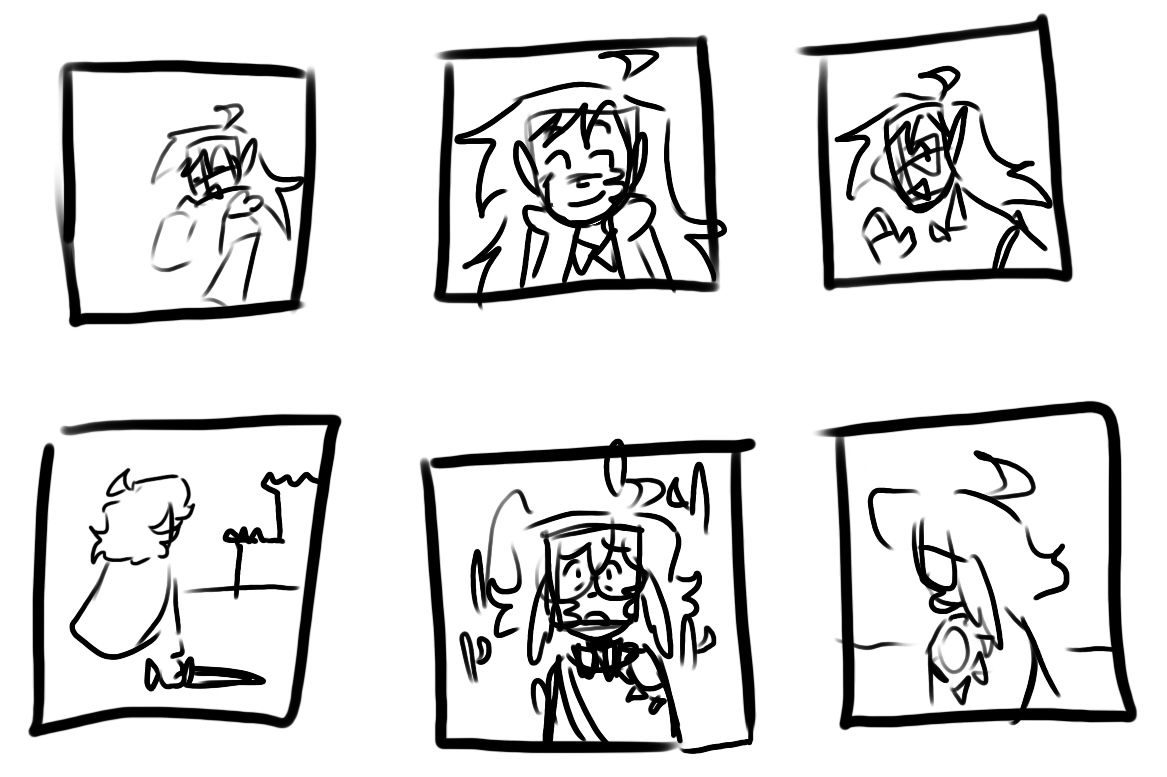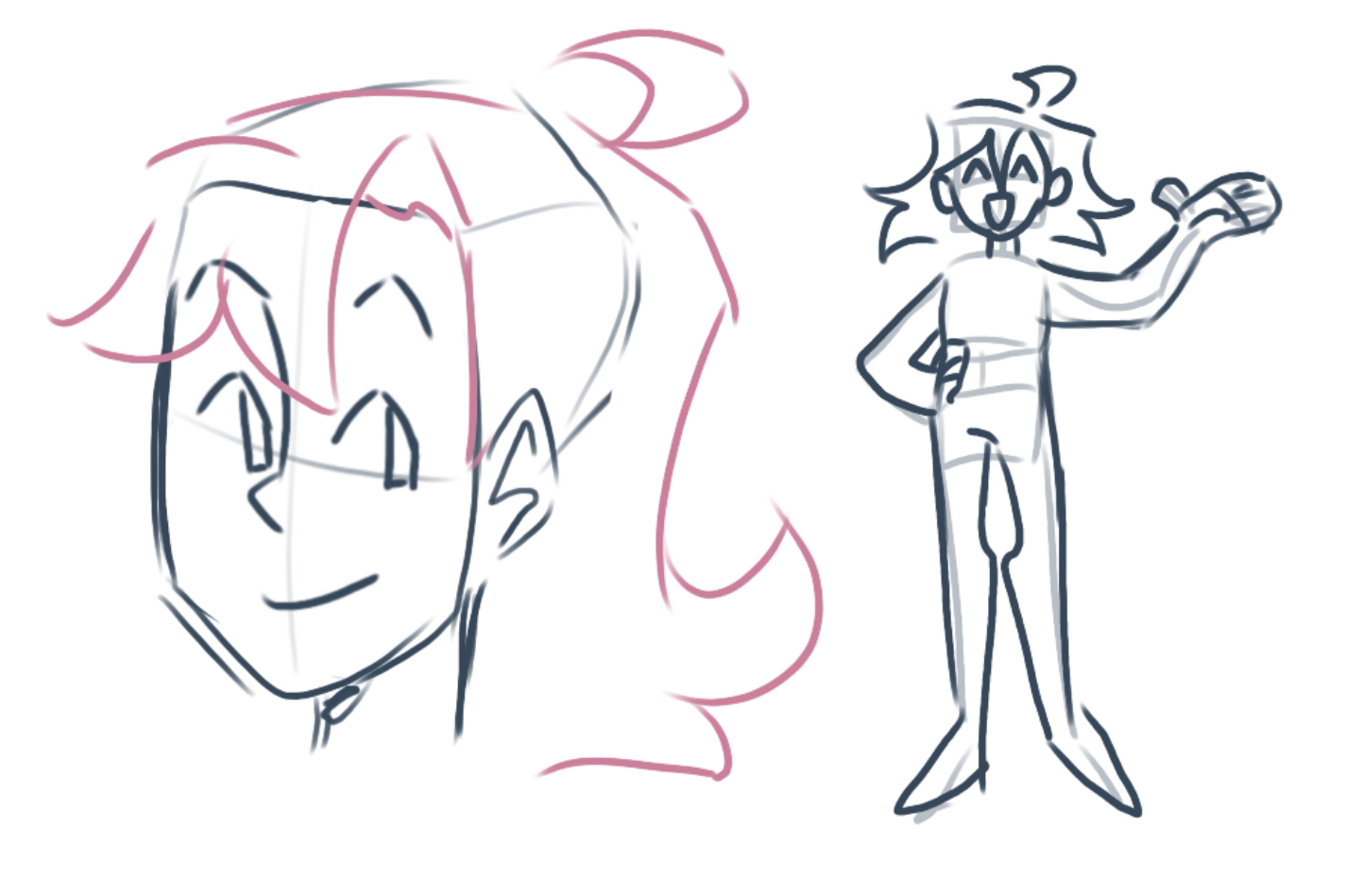Sketching
How To Start
When I start a drawing with no idea what I want to draw there are a couple ways I navigate this. First is going on pinterest and scorlling a bit. This isn't the best solution, espcially since I usually end up getting distracted and not actually drawing, but sometimes it can give me the inspiration and ideas I need.
Another way I like to get ideas is asking my friends for something to draw. This can help me draw things I would've never drawn otherwise!
My favorite thing to do though, is look at old art. Redrawing old art has been one of my favorite things to draw since I had enough art to redraw it. It's always nice to see how much you've improved, and to see what an old peice can look like in a new style.
But what to do if you have an idea and don't know how to execute it? Thumbnails!!
Thumbnails are basically smaller, rougher versions of what you want your full image to look like. This is usually done very small and a lot of artists tend to make a lot of them before starting a piece. I generally only do one or two, but I've heard of artists that make at least 20 before starting a piece.

Thumbnails are usually very low effort and are made to show the different ways a drawing could look based on composition and shapes. You can even make color thumbnails but that's gonna be talked about in the color section.
Once I have a thumbnail I like, I resize it to fit my entire canvas, lower the opacity and begin sketching!
Shapes
When sketching I use a lot of construction lines. These are basically just parts of a sketch that are there only to help you understand where to put things, and most of the time aren't in the final drawing. These are most seen in basic skeleton drawings, criss cross lines to indicate which way a shape is facing, and 3d shapes to help with perspective.

The biggest thing that changed my construction lines, is when I started drawing the skeleton under the person as 3d shapes instead of 2d. What this means is that the regular rectangles I would've used for say the torso and hands, would instead be rectangular prisms. I also used to start drawing the head by creating a circle and drawing the jaw under it, but have since started it by drawing a rectangle and then adding the jaw. I still use a circle for the head when I am trying to get a more cartoonish style, but using the rectangle has helped a lot for me.
Process
When I'm creating a finished drawing, I do usually 2 to 3 sketches. I start with a rough sketch that include construction lines and minimal details to clothes and hair, then I flip the canvas and fix any proportional issues (Flipping the canvas helps you get a fresh look at your drawing, and highlights any leaning or wonky proportions). Then I do a second, more refined sketch to make lineart easier. After this, if I feel like it needs to be more refined or flipped again, I will do a third sketch. And once I feel like my sketch is refined enough for lineart, I move to the next step!
Also during sketching if I notice any wonky proportions like mentioned earlier, the transform tool is my savior! It's in most art programs and lets you move around sections of your drawing. I would recomend to use this mostly only in the sketching phase, as in a lot of art programs it blurs your drawing a little and stretches lines making them thinner or thicker and therefor can make lineart look messy or low quality.